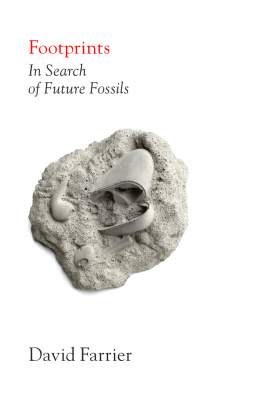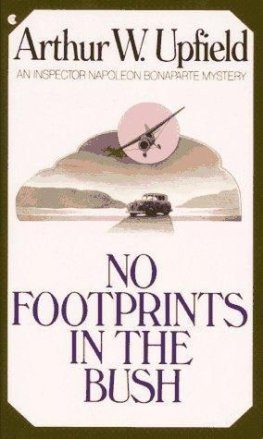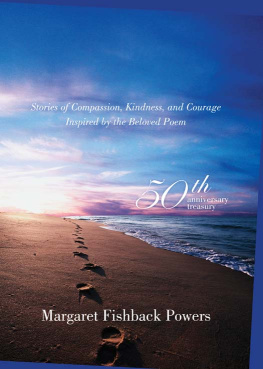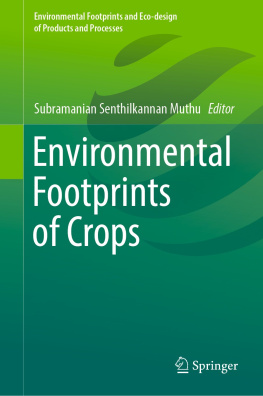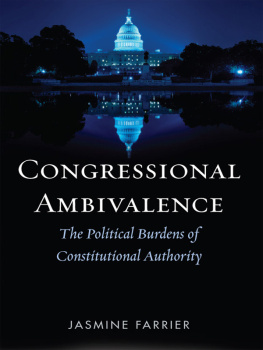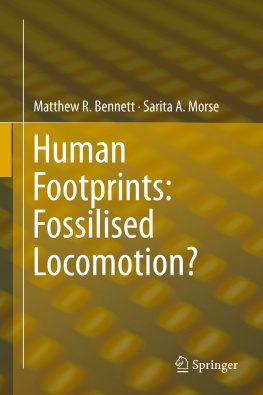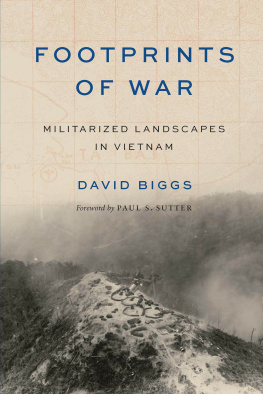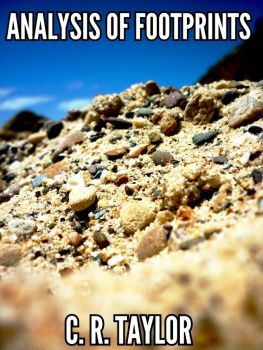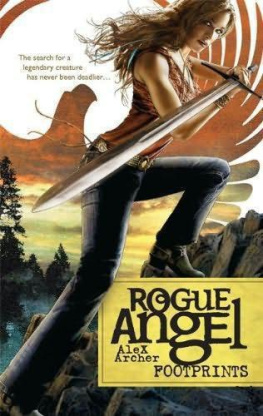David Farrier - Footprints
Here you can read online David Farrier - Footprints full text of the book (entire story) in english for free. Download pdf and epub, get meaning, cover and reviews about this ebook. year: 2020, publisher: HarperCollins Publishers, genre: Art. Description of the work, (preface) as well as reviews are available. Best literature library LitArk.com created for fans of good reading and offers a wide selection of genres:
Romance novel
Science fiction
Adventure
Detective
Science
History
Home and family
Prose
Art
Politics
Computer
Non-fiction
Religion
Business
Children
Humor
Choose a favorite category and find really read worthwhile books. Enjoy immersion in the world of imagination, feel the emotions of the characters or learn something new for yourself, make an fascinating discovery.
- Book:Footprints
- Author:
- Publisher:HarperCollins Publishers
- Genre:
- Year:2020
- Rating:4 / 5
- Favourites:Add to favourites
- Your mark:
- 80
- 1
- 2
- 3
- 4
- 5
Footprints: summary, description and annotation
We offer to read an annotation, description, summary or preface (depends on what the author of the book "Footprints" wrote himself). If you haven't found the necessary information about the book — write in the comments, we will try to find it.
Footprints — read online for free the complete book (whole text) full work
Below is the text of the book, divided by pages. System saving the place of the last page read, allows you to conveniently read the book "Footprints" online for free, without having to search again every time where you left off. Put a bookmark, and you can go to the page where you finished reading at any time.
Font size:
Interval:
Bookmark:

IN SEARCH OF FUTURE FOSSILS

4th Estate
An imprint of HarperCollinsPublishers
1 London Bridge Street
London SE1 9GF
www.4thEstate.co.uk
This eBook first published in Great Britain by 4th Estate in 2020
Copyright David Farrier 2020
Cover image by heartlessmachine.com
Cover photograph by Ethan Humphries
David Farrier asserts the moral right to be identified as the author of this work
A catalogue record for this book is available from the British Library
All rights reserved under International and Pan-American Copyright Conventions. By payment of the required fees, you have been granted the non-exclusive, non-transferable right to access and read the text of this e-book on-screen. No part of this text may be reproduced, transmitted, down-loaded, decompiled, reverse engineered, or stored in or introduced into any information storage and retrieval system, in any form or by any means, whether electronic or mechanical, now known or hereinafter invented, without the express written permission of HarperCollins
Source ISBN: 9780008286347
Ebook Edition March 2020 ISBN: 9780008286354
Version: 2020-01-20
For Isaac and Annie
E nglands eastern edge is slowly being reclaimed by the sea. At a rate of around two metres per year, the tides carry away the shallow cliffs that form the East Anglian coastline. Seasonal storms gouge away the earth, mostly glacial till that was deposited when ice sheets reached as far as southern Britain 450,000 years ago; like a cheaply made wall, the coast is vulnerable to erosion and sudden collapses. One night in 1845, a farmer ploughed a twelve-acre field near Happisburgh, in Norfolk, and retired to bed with the soil ready for planting the following morning. When he woke, the field had vanished. Coastal defences built after devastating floods in 1953, which killed over three hundred people, have long since crumbled. Buildings that once stood out of sight of the coast now huddle within its reach, and homeowners watch anxiously as the margin creeps closer, eating up their lovingly tended gardens inch by inch. Occasionally, a house tumbles into the sea. The ground beneath your feet feels provisional, as though you are standing on borrowed time.
Sometimes, though, the sea gives something back. In May 2013, a spring storm uncovered the oldest traces of human passage outside Africa on Happisburghs claggy foreshore. Heaving seas had stripped away the sand behind the dilapidated postwar flood defences to reveal a section of laminated silt flecked with dozens of lozenge-shaped hollows. The scooped depressions were the 850,000-year-old fossil footprints left by a group of early humans, Homo antecessor, moving along the muddy banks of an ancient river. The differently sized footprints suggested that it was a group of mixed age, adults and children, headed in a southerly direction. At the time, it was an estuarine landscape, populated by pine, spruce, and birch forests interspersed with open areas of heath and grassland. Photographs of the footprints resemble a step map of a frantic dance floor. The busy play of feet suggests a neighbourly scene: adults pausing to coax tired children or turning to check the horizon for predators; arms raised to indicate points of interest or offer an encouraging hand on the shoulder. Some impressions were so well preserved that you could see the outlines of individual toes.
Briefly, startlingly, this small party of hominids walked out of the deep past and into the present. They disappeared almost as fast: within two weeks, the tide had washed away every print.
Ancient footprints, like burrows, tracks and tooth marks, are known as trace fossils. Unlike fossilized remains, they speak of life rather than death. Though bodiless, they bear witness to a departed bodys weight, gait, and habits, telling stories about how ancient lives were lived. Trace fossils like the Happisburgh footprints are an accidental memory; where the group came from and where they were heading are beyond our knowing. But the prints offer an enchanting glimpse of ancestors whose past seems to brush against our present, whose step into our time seems like an invitation to join in a mysterious journey. Even in photographs they conjure the uncanny sensation that the group has only just left, their prints fresh and glistening that we could catch them, if only we hurried.
In terms of traces left by early humans, the Happisburgh footprints are relatively young. The oldest known hominid prints were made 3.6 million years ago, in volcanic ash at Laetoli in what is now the Ngorongoro Conservation Area, in Tanzania. They were discovered in 1976 and embraced as marks of a Pliocene first family, making their way like Miltons Adam and Eve, hand in hand with wandring steps and slow. When the deep past arrives in the present, it is often surprising. The Laetoli footprints were found when, in high spirits during a break in their labours, a team of palaeoanthropologists led by Mary Leakey began to throw elephant dung at one another. One exuberant member of the party noticed the prints only after falling on them.
But perhaps the most famous footprint, at least the one pressed most deeply in the Western imagination, was never really made at all:
It happend one Day about Noon going towards my Boat, I was exceedingly surprizd with the Print of a Mans naked Foot on the Shore, which was very plain to be seen in the Sand: I stood like one Thunder-struck, or as if I had seen an Apparition; I listend, I looked round me; I could hear nothing, nor see any thing there was exactly the very Print of a Foot, Toes, Heel, and every Part of a Foot; how it came thither, I knew not, nor could in the least imagine.
This discovery of a single footprint is the most iconic moment in Daniel Defoes Robinson Crusoe, published in 1719 and sometimes referred to as the first modern novel. Robert Louis Stevenson considered it one of four emblematic scenes in literature that, more than any other, have been printed on the minds eye forever. Fridays impossible mark how can there be only one, isolated in the middle of an otherwise pristine beach? has Crusoe spooked. After enduring the solitude of his deserted island, he suddenly sees hints of human presence everywhere, mistaking every bush and tree, and fancying every stump at a distance to be a man.
The discoveries of Fridays footprint and the footprints of early humans have such a vivid claim on our imagination because we have all lived a version of it at some point: the sudden feeling of being accompanied by an unseen other. Although you are alone, the air seems somehow closer, or an empty room is still thick with the presence of one only just departed. Someone or something has passed through already.
In the final part of The Waste Land, T. S. Eliot drew inspiration from accounts of the Shackleton expeditions to Antarctica, in which exhausted members of the party would hallucinate that there was always one more person present than could be counted. When I look ahead up the white road, complains one of the poems many disembodied voices, there is always another one walking beside you. It was recently suggested that the Laetoli footprints do not represent a pair walking side by side, as was originally thought, but sets of individual prints made at different times. New high-resolution photographic techniques have revealed a third set of toeprints obscured by the other two. The third walker seems to have favoured their left foot over their right and was perhaps carrying an injury. Wherever they were going, they did not come back by the same route: there are no footprints to mark the return journey.
Font size:
Interval:
Bookmark:
Similar books «Footprints»
Look at similar books to Footprints. We have selected literature similar in name and meaning in the hope of providing readers with more options to find new, interesting, not yet read works.
Discussion, reviews of the book Footprints and just readers' own opinions. Leave your comments, write what you think about the work, its meaning or the main characters. Specify what exactly you liked and what you didn't like, and why you think so.

